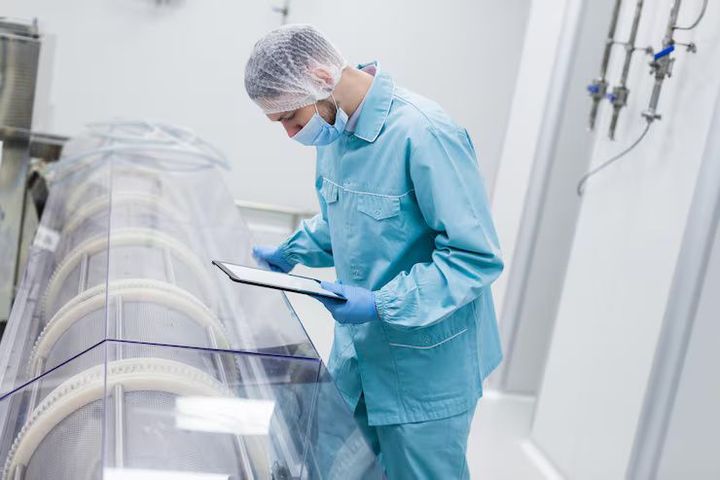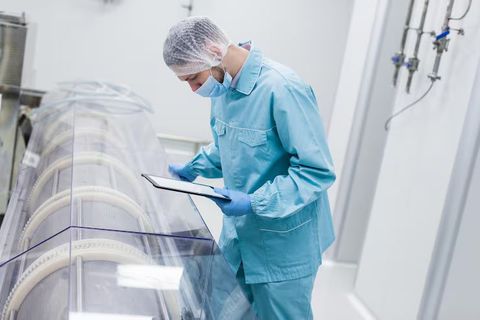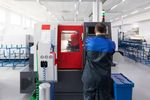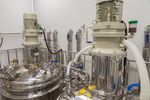
Food Processing Machine Overview: Understanding Components, Functions, and Working Basics
Food processing machines are mechanical and digital systems used to convert raw agricultural materials into edible, safe, and consumable products. These machines help in cleaning, cutting, mixing, grinding, drying, heating, packaging, and preserving different types of food. They exist to ensure consistency, improve efficiency, enhance safety, and support large-scale food production.
Food processing machines play a foundational role in transforming raw food materials into finished food products. These machines handle various tasks such as sorting, grading, washing, peeling, blending, fermenting, and freezing. The goal is to maintain quality and reduce contamination while ensuring uniformity in flavor and texture.
Historically, food processing was done manually or through small mechanical tools. However, rising demand for hygienic and processed foods in homes, restaurants, supermarkets, and global trade encouraged the development of industrial-scale machines. Today, food production systems depend heavily on automated and semi-automated equipment to meet nutritional standards, shelf-life requirements, and regulatory guidelines.
Importance
Food processing machines are essential in modern food systems because they:
-
Increase production efficiency and consistency
-
Help maintain food hygiene and prevent spoilage
-
Enhance nutritional stability and extend shelf life
-
Support safe handling of perishable ingredients
-
Allow scalable production to meet public and commercial food demand
These machines affect:
| Stakeholder Group | How They Are Impacted |
|---|---|
| Food Manufacturers | Enables faster, safe, and optimized production |
| Farmers & Suppliers | Provides reliable processing pathways for raw crops |
| Consumers | Gains access to safe, affordable, processed foods |
| Food Safety Authorities | Applies standards to maintain public health |
They solve major problems such as microbial contamination, inconsistent food texture, handling labor burden, storage challenges, and meeting health certifications like HACCP and ISO food standards.
Recent Updates and Trends (2024–2025)
Recent developments in food processing technology reflect advances in automation, sustainability, and monitoring:
-
Increased use of Industrial Automation (2024): Machines now incorporate sensors, robotics, and PLC control systems for precision.
-
Growth of Smart Food Manufacturing (2025): Integration of IoT devices enables real-time monitoring of temperature, cleanliness, and processing efficiency.
-
Sustainable Food Manufacturing Initiatives: Energy-efficient motors, stainless steel processing equipment, and recyclable packaging systems are being widely adopted.
-
Focus on Allergens and Cross-Contamination Control: Many facilities are implementing separation zones and automated cleaning systems to meet global food safety compliance.
-
Rise in Plant-Based Food Production Equipment: Machines suited for soy protein, pea protein, and nut-based ingredients are growing in demand.
Laws, Policies, and Regulatory Compliance
Food processing machines and their operations must follow strict safety regulations. Key regulatory areas include:
-
Food Safety and Standards Authority Regulations: Ensuring machines are built with safe materials and allow hygienic processing.
-
Good Manufacturing Practice (GMP): Guidelines for clean and controlled environmental conditions.
-
Hazard Analysis and Critical Control Points (HACCP): Structured food safety monitoring during processing.
-
ISO 22000 Food Safety Management Systems: Standardized protocols for handling, processing, and distribution.
-
Sanitation and Cleanability Requirements: Machines should be made with non-toxic materials such as food-grade stainless steel and allow thorough cleaning to prevent bacterial buildup.
These policies focus on preventing contamination, ensuring operational traceability, and guaranteeing consumer health and confidence.
Components and Working Basics of Food Processing Machines
Food processing machines may vary based on their role, but most include the following components:
-
Frame and Structure: Usually made of stainless steel for durability and hygiene.
-
Motor and Power System: Provides the mechanical energy needed for operation.
-
Control Unit (Manual, Digital, or Automated): Manages speed, temperature, and motion.
-
Processing Chamber or Contact Area: The part that directly touches food, required to be corrosion-resistant and easy to clean.
-
Safety Shields and Guards: Prevents accidental contact with moving parts.
Basic Working Principles
-
Input Stage: Raw material is supplied manually or automatically.
-
Processing Stage: Machines apply mechanical or thermal actions like grinding, drying, heating, or mixing.
-
Quality and Safety Check: Sensors or operators ensure standards are met.
-
Output Stage: Finished or semi-processed material is moved to the next step or packaging.
Tools and Resources
Helpful reference tools and platforms for understanding systems, standards, and guides:
-
Codex Alimentarius: Internationally recognized standards on food safety.
-
HACCP Online Training Resources: Helps understand risk control points.
-
ISO 22000 Documentation Guides: Templates for food safety management.
-
Food Safety Knowledge Hub: Provides regulatory updates and best practices.
-
Equipment Maintenance Logs and Checklists: Supports safe machine handling.
FAQs
What are the main types of food processing equipment?
Common types include cleaning machines, sorting machines, cutting and slicing equipment, mixers, grinders, fermentation units, heating and cooling systems, and packaging equipment.
Why is stainless steel commonly used in food processing machines?
Stainless steel is resistant to corrosion, easy to clean, and does not react with food, making it suitable for maintaining hygiene and safety.
How do food processing machines help with food safety?
They reduce direct human contact, maintain controlled processing conditions, and help prevent contamination from microorganisms.
What is the role of automation in food processing?
Automation ensures precision, consistent product quality, reduced waste, and controlled processing parameters while enhancing production efficiency.
Are small-scale and large-scale processing machines different?
Yes. Small-scale machines are designed for limited production and flexibility, while large-scale machines are built for continuous operation and high output volume.
Conclusion
Food processing machines are central to modern food manufacturing, ensuring that food remains safe, consistent, and suitable for consumption. They support efficiency, sustainability, and hygiene while aligning with regulatory standards and technological advancements. As innovation continues, trends such as automation, clean processing technology, and sustainable material use are shaping the next generation of food processing systems.
These machines not only simplify production but also play an important role in global food safety and supply chain stability, making them essential to everyday life.






